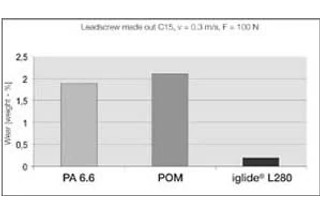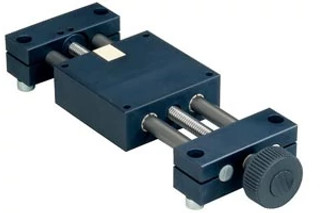Change Language :

Whether you want to design your own linear slide table system or buy one as a readymade, off-the-shelf assembly, there are a wide variety of linear products available on the market today. Materials like plastic or bronze leadscrew nuts, ball screws, as well as a variety of belt-driven ball bearing systems can make the choice difficult.
Below are a few suggestions that might make things easier.
Useful Links and Tools

Figure 1: igus®' ZLW belt-driven slide table is available as an off-the-shelf solution.
1. Consider an off-the-shelf solution
You always have the option of buying any number of different components to piece together your own belt or leadscrew-driven assembly.
However, after you factor in the research, design, drawing, purchasing, QC, and assembly, you could have purchased a part from a catalog and designed several other aspects of your equipment - saving time and hidden costs. If this fits in with your design, buying something off-the-shelf, pre-assembled may be the best way to go.

Figure 2: igus®' high-performance iglide® plastic bearings versus simple plastic lead screw nuts in a wear test at loads of 22.5lb, rotating at 1 fps on cold-rolled steel.
2. Plastic versus metallic bearings
At igus®, we manufacture plastic bearings with the fundamental belief that they can help machinery last longer, at a lower cost and without maintenance. When using plastic bearings in linear applications, remember to use proper spacing between the bearings along the axis of travel.
The typical rule-of-thumb is to use what we call the “2-to-1 rule”, which means that the loads’ center of gravity, and the drive-force (if designing your own assembly), needs to be within 2 x the bearing distance or less. For example, if you have a bearing spacing of 10 inches (center to center in the axis of travel), any acting force on the bearings should be less than 20 inches away.
If this rule is not followed, you are likely to have a 'chattering' or 'binding' effect. This is especially true with belt-driven systems, which often have high speeds and accelerations, as this principal is a result of friction and inertia. You can purchase an assembly with either a longer plate or an extra carriage to make sure your application follows this rule.
For very slow moving leadscrew assemblies, or for static loads, this rule is not as crucial (as long as the drive-force is within 2-to-1). You may need to use ball bearings or lubricated bearings in applications with very high cantilevers, or when the linear positioning tolerance needs to be less than +/- 0.008in.

drylin® HTS linear slide table
Choosing a lead screw, ball screw, or belt drive
Some companies offer ball-screw systems that are designed to carry heavy loads at high speeds and are typically designed for extremely precise positioning. At igus®, we offer a cost-saving alternative within our of lead screw and belt-driven systems. We primarily recommend these lead-screw tables for low-speed positioning and set-up applications. These applications typically have speeds less than 60 inches-per-minute of continuous motion which require no less than +/-0.004in. of linear positioning tolerance.
Belt-driven systems are better suited for applications with loads under 16 pounds and high speeds up to 16 feet-per-second, and are not typically recommended for applications requiring linear positioning tolerances of less than +/-0.008in.